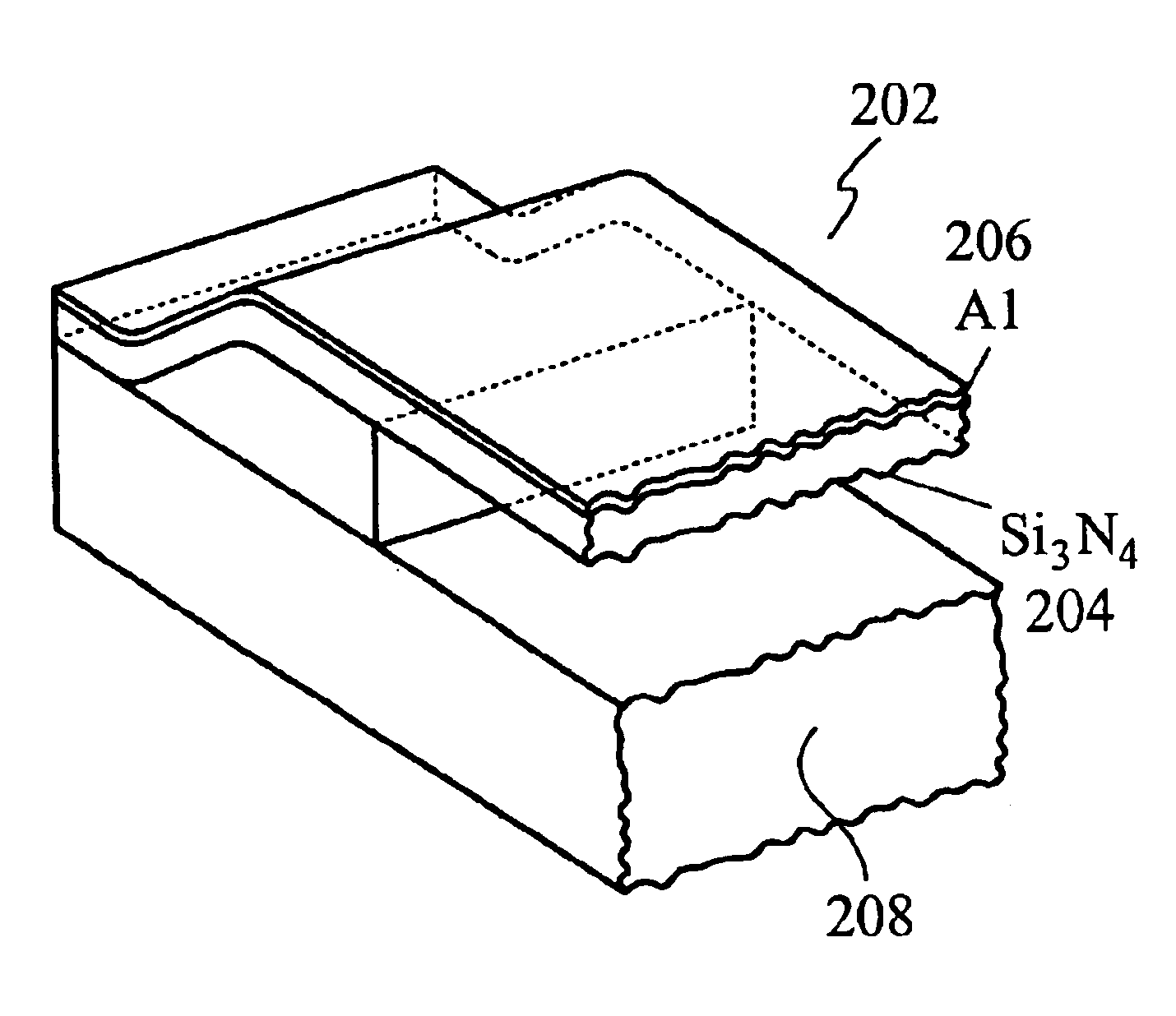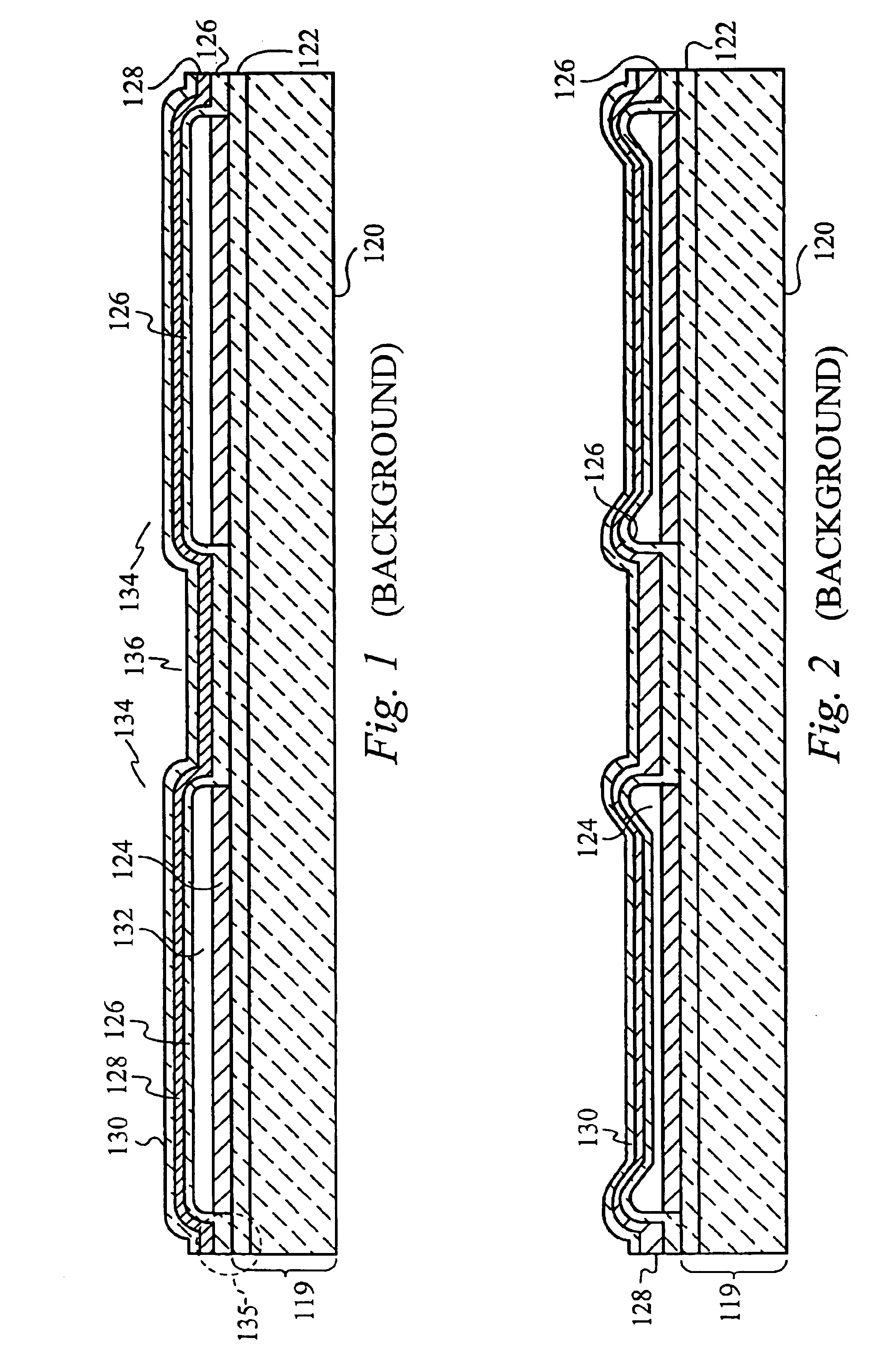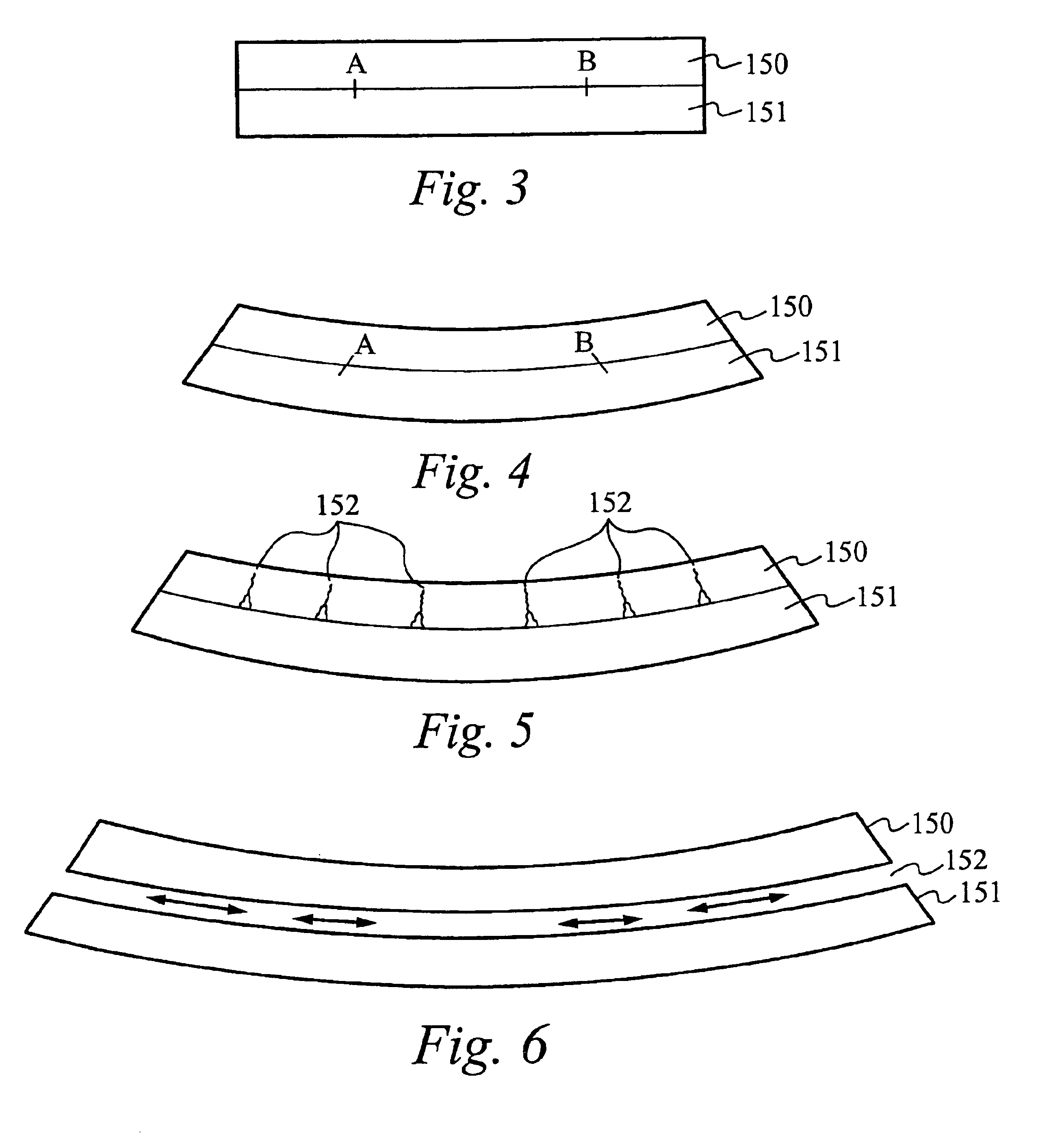Method and apparatus for leveling thermal stress variations in multi-layer MEMS devices
a technology of multi-layer mems and thermal stress variation, applied in the direction of instruments, optical elements, semiconductor/solid-state device details, etc., can solve the problems of the change of the pull-down voltage required to fully deflect the ribbon, and the inconvenient operation of the ribbon. achieve the effect of constancy of tension, reduced variations in deflection force, and constant operation over an operational temperature rang
- Summary
- Abstract
- Description
- Claims
- Application Information
AI Technical Summary
Benefits of technology
Problems solved by technology
Method used
Image
Examples
Embodiment Construction
[0035]U.S. Pat. No. 5,311,360 entitled “METHOD AND APPARATUS FOR MODULATING A LIGHT BEAM” and U.S. Pat. No. 5,841,579 entitled “FLAT DIFFRACTION GRATING LIGHT VALVE to Bloom et al. and U.S. Pat. No. 5,661,592 entitled “METHOD OF MAKING AN APPARATUS FOR A FLAT DIFFRACTION GRATING LIGHT VALVE” to Bornstein et al., and U.S. Pat. No. 5,808,797 entitled “Method and Apparatus for Modulating a Light Beam” to Bloom, et al. are herein incorporated by reference.
[0036]Reference will now be made in detail to the preferred embodiments of the invention, examples of which are illustrated in the accompanying drawings.
[0037]FIG. 7 is a cross sectional view of a ribbon 134. Arrows present in the layers 126, 128 illustrate that there can be distinct tensile and compressive forces present within the layers 126, 128 of the ribbon 134. Rather, the tension of the ribbon is equal to the sum of the tensions and compressions of the various layers, as illustrated in equation 1:
Fribbon=Σ(σAl+σSi3N4+σOx) 1)
In...
PUM
| Property | Measurement | Unit |
|---|---|---|
| Thickness | aaaaa | aaaaa |
| Thickness | aaaaa | aaaaa |
| Thickness | aaaaa | aaaaa |
Abstract
Description
Claims
Application Information
 Login to View More
Login to View More - R&D
- Intellectual Property
- Life Sciences
- Materials
- Tech Scout
- Unparalleled Data Quality
- Higher Quality Content
- 60% Fewer Hallucinations
Browse by: Latest US Patents, China's latest patents, Technical Efficacy Thesaurus, Application Domain, Technology Topic, Popular Technical Reports.
© 2025 PatSnap. All rights reserved.Legal|Privacy policy|Modern Slavery Act Transparency Statement|Sitemap|About US| Contact US: help@patsnap.com



